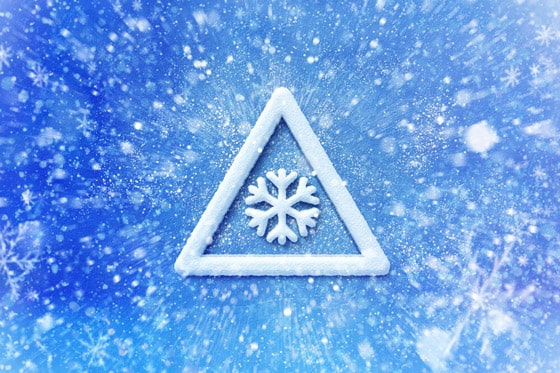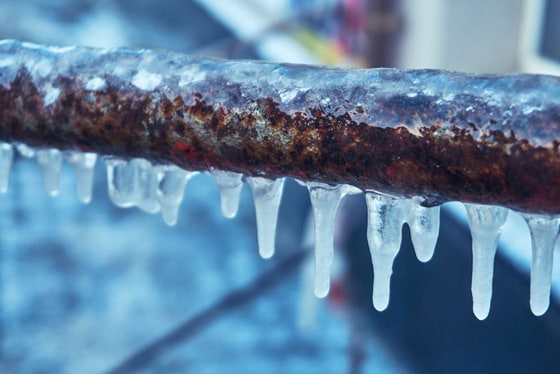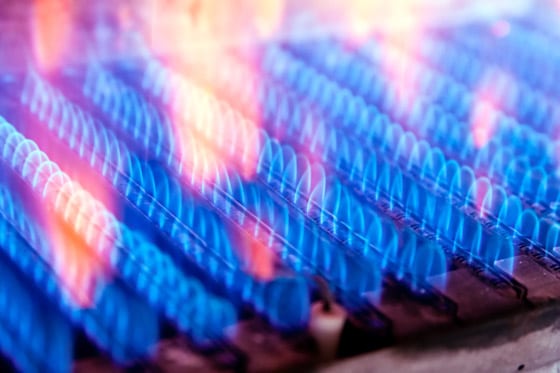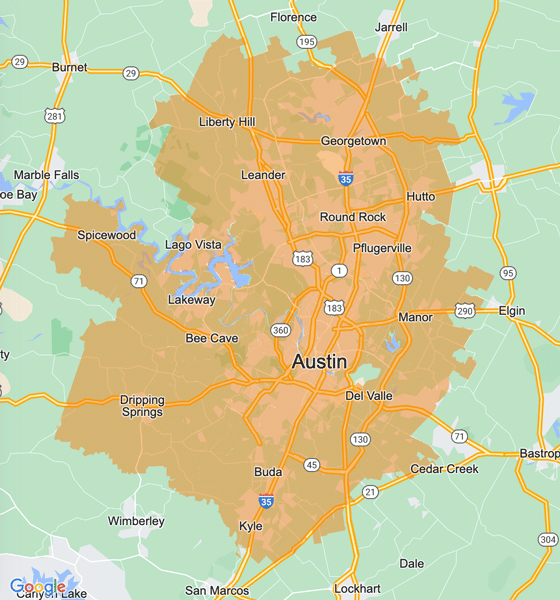Brace for the looming winter storm! Ensure your home’s safety and comfort with Radiant® Plumbing and Air Conditioning’s prompt winter emergency inspection. Our experts are at the forefront of winterization, protecting your plumbing and HVAC against harsh conditions. The clock is ticking – a timely inspection is key to preventing issues after the storm and maintaining a cozy, secure home environment.

For lower-level emergences, used our online form to reach us 24/7 about any plumbing issue you’re having within your home.
"*" indicates required fields

In “all electric” homes, heat pumps are commonly used for winter heating. These systems, ideal for mild climates, operate differently in freezing temperatures.
Defrost Cycle: Your heat pump will enter a defrost cycle in near-freezing conditions. You might notice unusual sounds and steam from the outdoor unit. This is a normal process to melt any ice forming on the unit. To check if your heat pump is functioning properly, compare the thermostat setting with the actual indoor temperature. A significant difference indicates it’s time to consult a professional.
Auxiliary Heat: During extreme cold (below freezing), heat pumps may switch to auxiliary heat. This shift is standard and temporary; the system reverts to the heat pump when temperatures rise above freezing.
Natural gas or propane gas furnaces are popular in many homes for efficient heating. To ensure safety and optimal performance, it’s crucial to have these systems annually inspected by a licensed professional. The key aspects of this check include:
Additionally, homeowners should regularly test and maintain their smoke and carbon monoxide detectors, ensuring they have functional batteries.

Radiant Plumbing & Air Conditioning operates across Austin and San Antonio, keeping over 10,000 homeowners happy with home repairs, installations, and maintenance.


At Radiant Plumbing and Air, we’re here to serve you across Central Texas, including the wonderful cities of Austin and San Antonio. When it comes to winter weather emergencies, your comfort and safety are our top priorities. We understand that urgent repairs can’t wait, and if you have an emergency that requires immediate attention, rest assured, we’re on our way to help you.
However, during major weather storms, like the ones we occasionally experience in Texas, we may need to schedule your service for a slightly later time. Please don’t worry, though – our expert team will still be there as quickly as possible, and we’ll keep you informed every step of the way. You won’t be left out in the cold.
When your home needs it most, remember to call Radiant Plumbing and Air. We’re here for you, ready to provide the trusted, reliable service you deserve. Don’t hesitate to reach out to us now for emergency service – your comfort is our mission!
If your heat pump is blowing cold air during winter, consider these potential causes:
Reversing Valve Problems: This valve changes the refrigerant flow direction, switching between heating and cooling. If it’s malfunctioning, the heat pump may not switch modes properly, leading to cold air output in heat mode. This issue also requires professional attention.
Air-source heat pumps are designed to extract heat from the outside air, but their efficiency decreases in colder temperatures. Typically, they operate best down to about 23°F. Below this, especially around or below 30°F, their ability to heat effectively diminishes as less heat energy is available in the external air. Heat pumps may still work in these lower temperatures but often require auxiliary heating systems, like electric resistance heaters, for additional warmth.
While standard heat pumps struggle in extreme cold, newer models are better equipped for lower temperatures, functioning efficiently even below 23°F. However, as temperatures drop significantly, maintaining indoor warmth can still be challenging for many models.
To defrost your heat pump, it’s important to first understand that modern heat pumps are usually equipped with an automatic defrost cycle. This system is designed to detect ice buildup and initiate a defrost cycle as needed. Here’s what you can do:
Avoid Direct Heat Sources: Do not use open flames or extremely hot water to melt the ice, as this can damage the system.
Thawing frozen pipes safely is crucial to prevent further damage or potential burst pipes. Here are some steps to safely thaw frozen pipes:
Turn Off the Water Supply: Locate your main water shutoff valve and turn it off. This step is essential to prevent water from flowing through the frozen pipe once it thaws.
Open Faucets: Open the affected faucet or faucets connected to the frozen pipe. This will allow any water and pressure to escape when the ice thaws, reducing the risk of pipe damage.
Apply Heat Gradually: There are several methods to apply heat safely to the frozen pipe:
Avoid Open Flames or Electric Heaters: Do not use open flames, propane torches, or electric heaters with exposed heating elements to thaw pipes. These methods can be dangerous and may damage the pipe or surrounding materials.
Be Patient: Thawing a frozen pipe takes time. Be patient and allow the heat source to work gradually. Applying too much heat too quickly can increase the risk of pipe damage.
Check for Leaks: After successfully thawing the pipe, check for any leaks or cracks. If you notice any, you’ll need to repair or replace the damaged section.
Insulate and Prevent Future Freezing: Once the pipe is thawed and any necessary repairs are made, insulate the pipes to prevent future freezing. Also, take steps to better insulate your home to prevent pipes from freezing during future winter storms.
Remember that if you are uncomfortable or unsure about safely thawing frozen pipes, it’s best to call a professional plumber for assistance. Read our blog post about preventative measures, such as insulating pipes and ensuring your home is adequately prepared for winter, can help reduce the likelihood of frozen pipes in the first place.
Experience unparalleled expertise, reliability, and skill in every home service we provide.
For over 20 years, Radiant Plumbing & Air has set the standard for professional home services. Our team of licensed and insured technicians brings unmatched expertise to every job, ensuring reliable repairs and maintenance. We're committed to excellence, and it shows in every task we undertake.
Trust is the cornerstone of our services at Radiant. We guarantee the reliability of our installations and repairs, conducted only by our fully licensed and insured professionals. With us, you can be confident that your home systems are in skilled hands.
Whether it’s plumbing woes or air conditioning tune-ups, Radiant Plumbing & Air covers it all. Our comprehensive equipment expertise means we’re equipped to fix all types of home systems. From routine maintenance to complex repairs, we handle every challenge with skill and efficiency.
Radiant is Austin’s #1 plumbing and air conditioning home repair specialists. Call today to schedule your service!

Trusted for home services and repairs by thousands of Texans since 1999. Enter your zip code for information about services in your area.
Please enter a five digit zip code
Already know your location?
Visit Radiant San Antonio or Radiant Austin
Services Are Unavailable in Your Area
Currently, we don’t serve your area. Click on a city below to learn more about our available services.